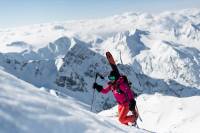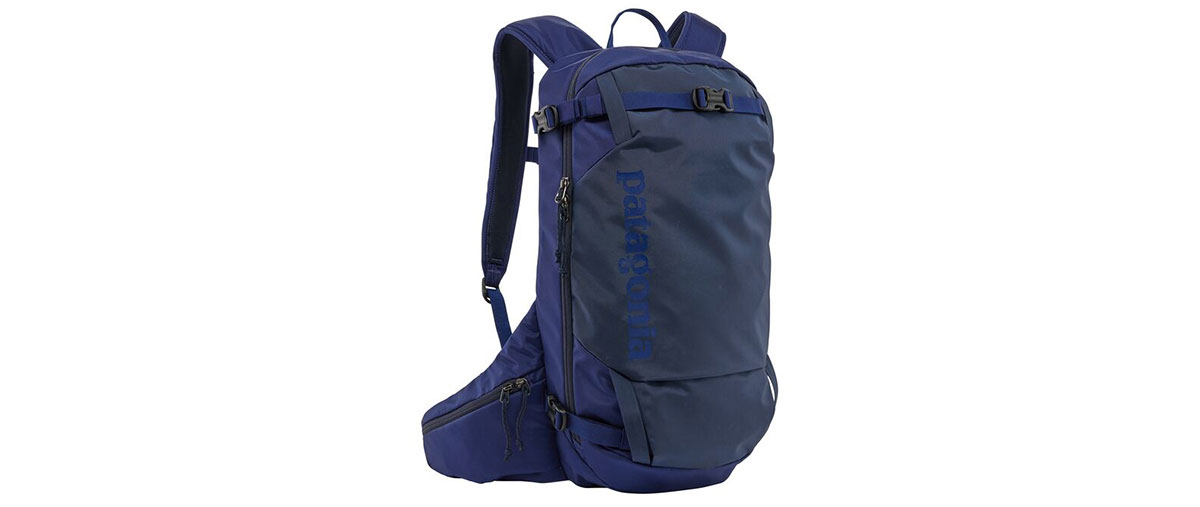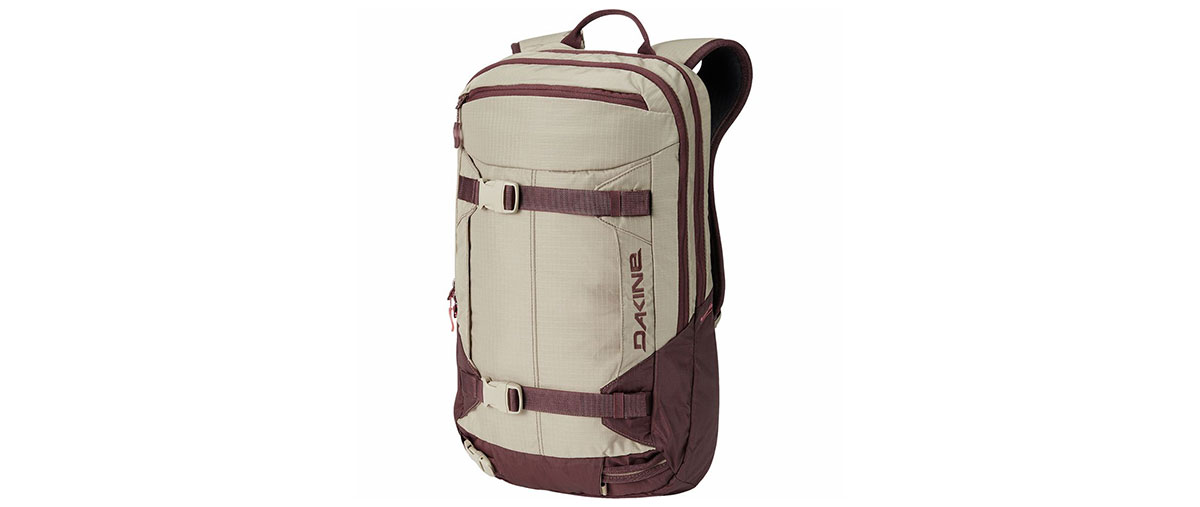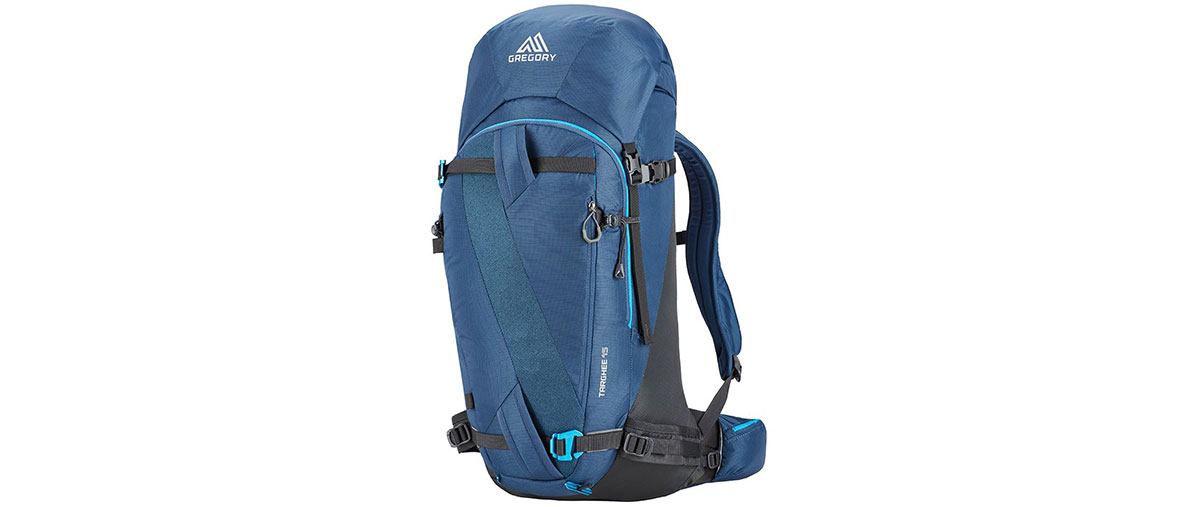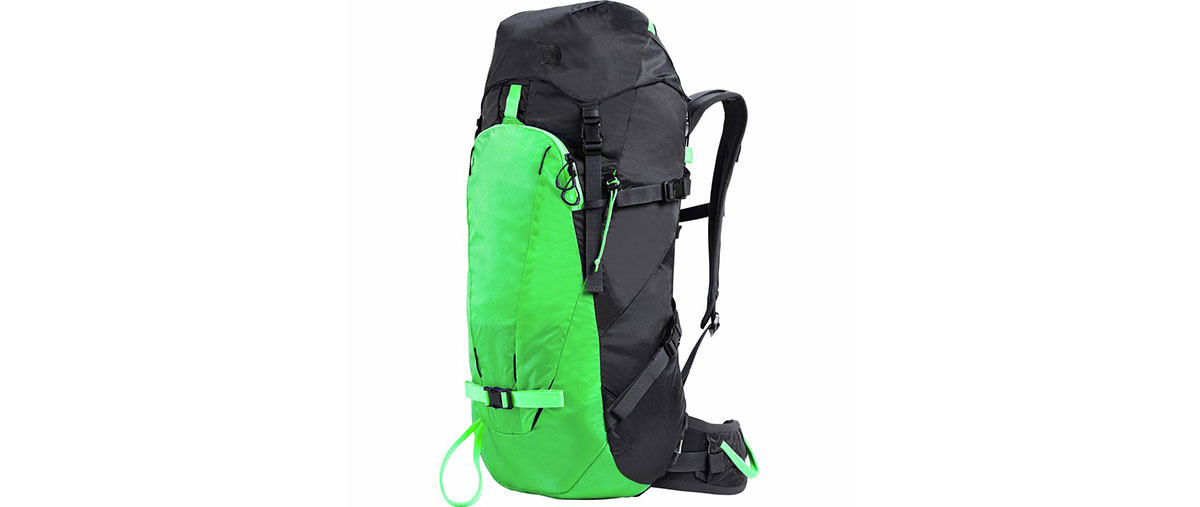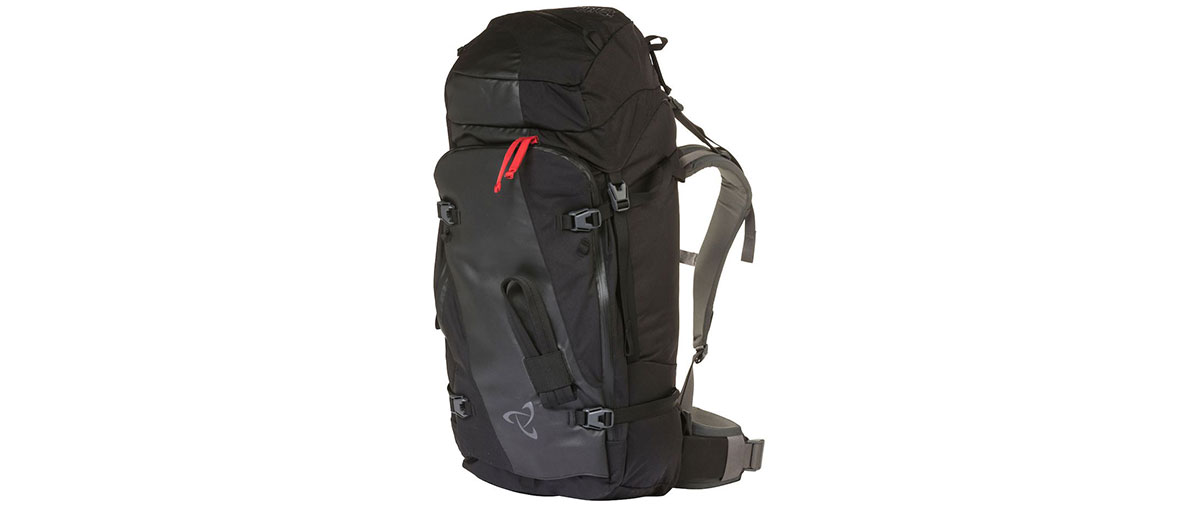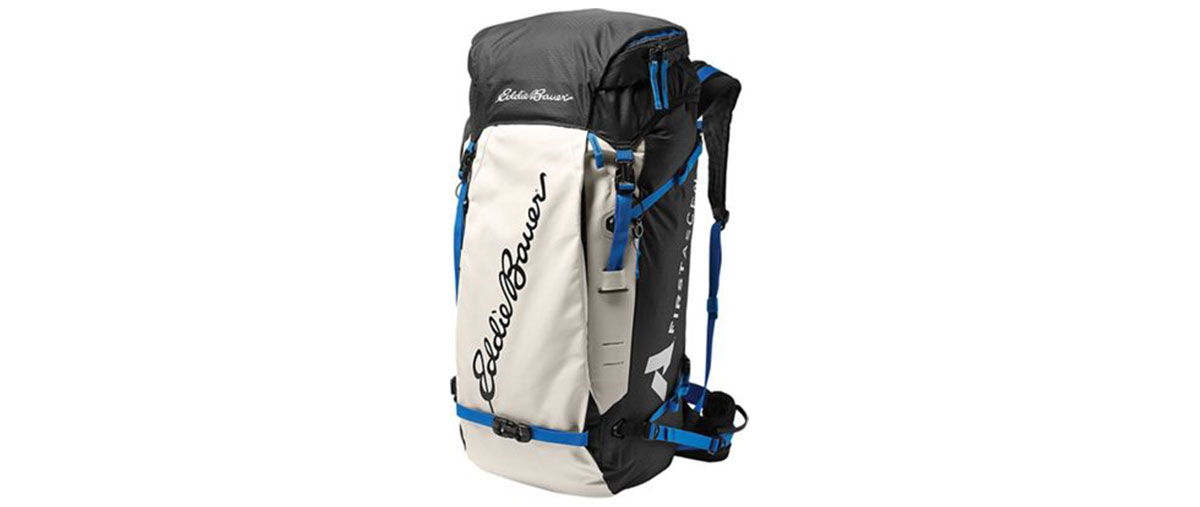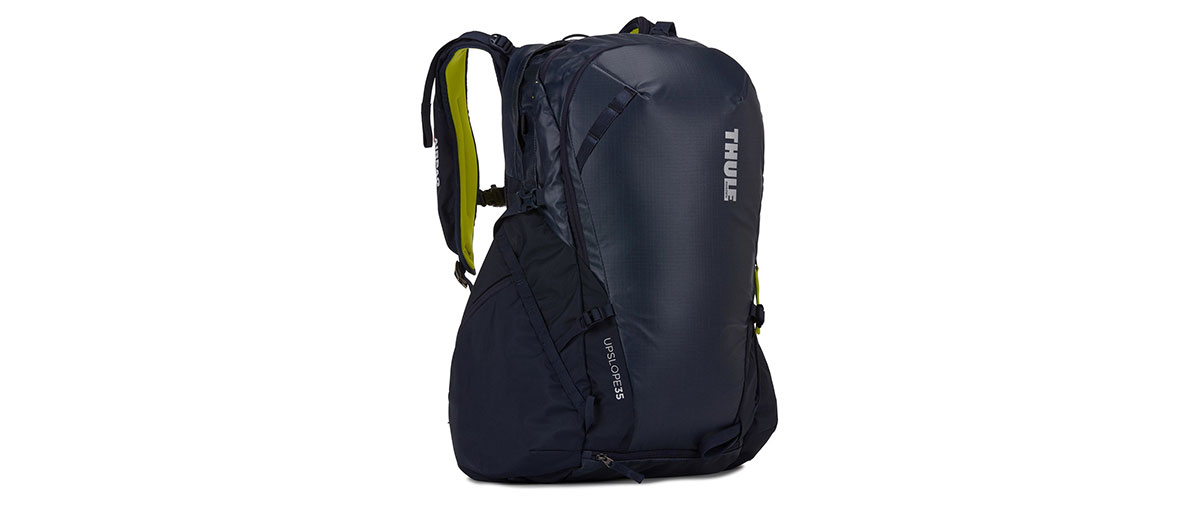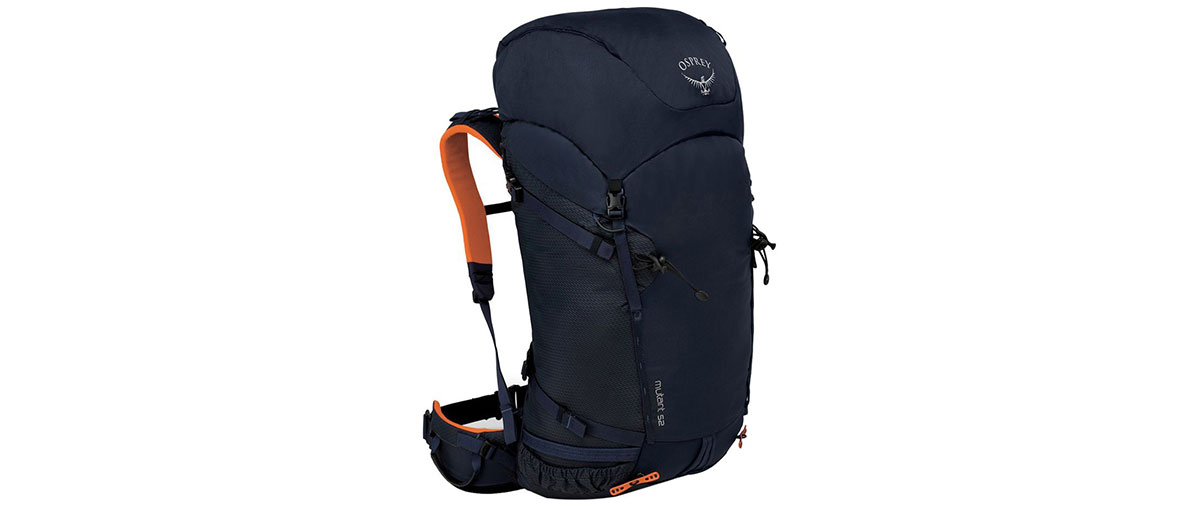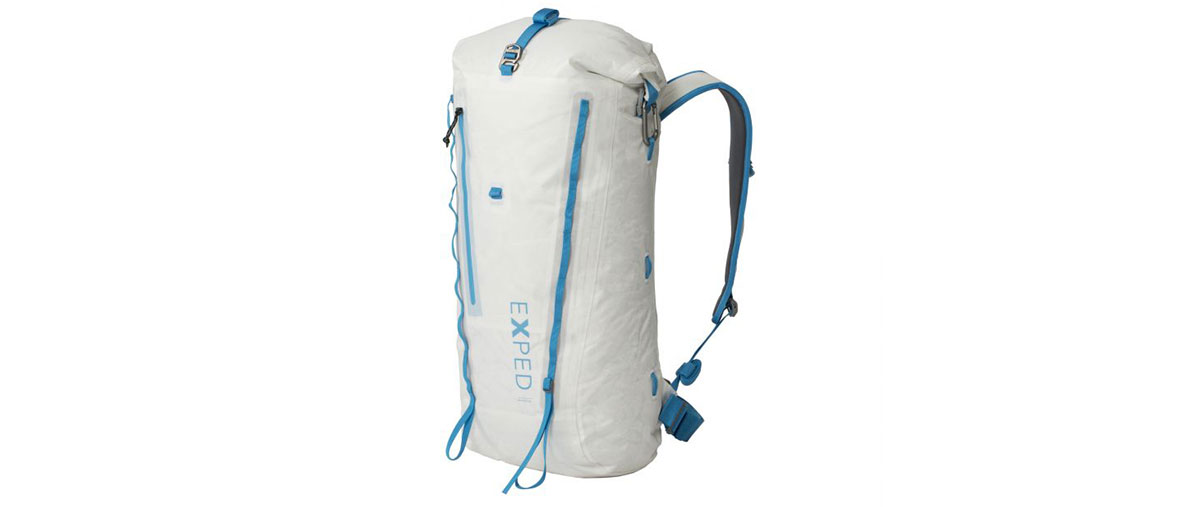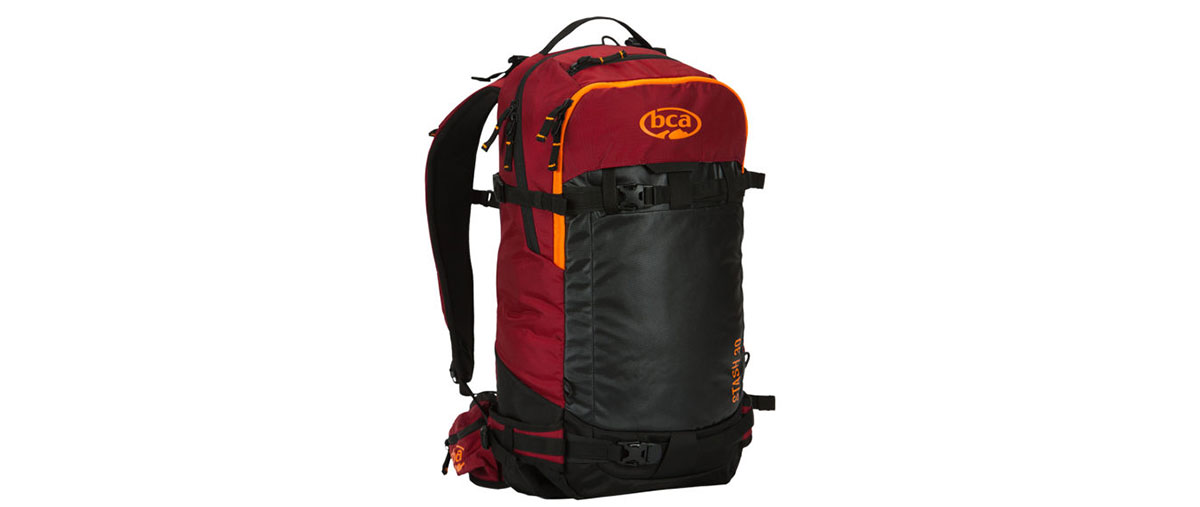From small packs designed for lift-access skiing to behemoths built for serious backcountry use, we found the best ski backpacks for every budget.
For skiers, backpacks carry avalanche rescue tools that can save lives.And other times they just carry a few candy bars and a water bottle. So picking the right pack for your ski day depends a lot on the mission at hand.
While most packs have a lot in common namely shoulder straps and a pack bag they differ wildly in size, weight, and how much theyll comfortably carry. Packs these days are incredibly well-made. Materials are built to last, seams are heat-welded or bar-tacked, and buckles only break if theyre abused.
Best Women's Ski Pants of 2020
We tested and reviewed the best women's ski and snow pants of 2020, including top picks from The North Face, Arc'teryx, Helly Hansen, and more. Read more
We tested two dozen packs that are available now. Testers racked up more than 300 ski days (at resorts and in the backcountry) in Canada, the U.S., Japan, and Europe. We climbed Oregons Mt. Hood, trekked and climbed in Nepal, hiked in the mountains around Innsbrook, and scrambled up snow-covered peaks in the Dolomites.
Its worth noting that this test does not address avalanche airbags, which we will cover in another article soon. But for traditional ski packs, these are the best of the best.
The Best Ski Backpacks of 2020
Best Overall: Patagonia SnowDrifter 30L ($169)
We love the SnowDrifter for its versatility. It has all the right features for backcountry missions, but the excellent compression makes it a worthy companion for everything from lift access to a dawn patrol skin session.
There are two ways to access the main compartment through the back panel or from the top via a big U-shaped zipper. Its nice to have both options in case you need to access the main compartment without laying your pack down.
On the top is a dedicated goggle pouch. Its not fleece-lined, but we like that its big enough for skins when theres little time for transitions. Bellowed hip-belt pockets fit big phones (with bulky cases), a beanie, and light gloves.
The snow-safety compartment has just enough organization for people who prefer a spot for everything but is unfettered enough so that the area is useful, even if you arent carrying a shovel and probe. We liked the deep zipper mesh pocket on the inside of the panel, as its handy for securing probe and skin sacks, a beacon (when not in use), and a headlamp.
The dense foam shoulder straps and hip belt are wide enough to distribute heavy loads. And we liked the easily adjustable sternum strap with its handy drinking tube attachment.
The 6.4-ounce, 430-denier recycled nylon material has both a PU coating and DWR finish, but the zippers arent waterproof.
Weight: 2 lbs. 10 oz.
Pros: Multiple ski-carry options and secure snowboard carry
Cons: No dedicated helmet-carry system
Best Budget: Dakine Mission Pro 18L ($90)
Bigger is not always better with ski packs. Sometimes you just need snacks, water, and a pack that disappears onto your back. The Mission Pro 18 doesnt have bells and whistles or a lot of space. But if you pack smart, it has everything you need for a day on the slopes. And, with the sub-$100 price tag, youll have money left in your wallet for some solid apres-ski happy hours.
The pack ticks all the boxes: diagonal ski carry, vertical snowboard carry, a dedicated snow-safety panel, a fleece-lined goggle pocket, and an insulated drinking tube. Theres even a whistle integrated into the chest strap.
Testers loved the pack for being so lightweight. Plus, the low-profile, streamlined design makes it great for riding a chairlift or ducking through grabby deadfall in search of untracked powder pockets.
For a pack of this size and weight, the suspension is surprisingly robust. The hip belt and shoulder straps are lightly padded, and theres a plastic framesheet that helps support loads and protect your back from sharp, pointy cargo.
Weight: 1 lb. 9 oz.
Pros: Light and compact
Cons: Not for overpackers
Great Organization: Gregory Targhee 45 ($210)
This is the SUV of the pack world. The floorplan will please even the most nit-picky of organizers. There are six zippered pockets. And on the packs front is a handy zippered pocket where you can stash sunglasses and snacks.
Then theres the zippered snow-safety compartment and a roomy pocket on top of the pack (with a small interior pocket with a key fob). The main compartment (accessed through the back panel) is big enough to house extra layers, a stove, small bivy, and a helmet. One wing of the hip belt has a zippered pocket thats big enough for a cellphone; the other side has a gear sling.
Theres an HDPE (plastic) framesheet and a single aluminum stay. The stay extends into the hip belt, which provides great load transfer. And we like that the straps have more padding than many winter ski packs weve tested. Even with the 35-pound load we toted on a hut trip, the pack shadowed our every movement, with no sway. The back panel is a molded foam with geometric patterns designed to shed snow.
The A-frame and front diagonal ski carry options are bombproof. Straps have camming buckles that lock in place, so theres no slip, and the front of the pack is reinforced with 1,000-denier CORDURA for extra durability. The tips of the skis are closer to the body and far enough from the head that theres no chance of banging into them, even if youre wearing a helmet.
The beefy 1,000-denier CORDURA on the packs front is equal to any exposed rock or grabby tree branches. Testers skied and rode for more than 60 days with the pack, with no scuffing. Tool attachment hardware and buckles for the snowboard/ski carry are aluminum.
Weight: 3 lbs. 11 oz.
Pros:Great ski and snowboard carry
Cons: Slightly heavy for its size
Best Ice Climbing Pack: Pieps Summit 30($118)
This pack is the perfect size for alpine climbing or ski mountaineering.The dedicated ice axe sleeve (a vertical tube on the front) is ideal for those times you need to quickly deploy and stow your axe without removing your pack from your back. There are also two stowable tool attachment loops at the bottom of the pack for traditional carry. A rubberized pick garage guard protects both the pack and you from exposed teeth.
Under the fixed lid (which prevents overstuffing) is a handy waterproof zippered pouch. Its especially handy if youre carrying valuables like a passport, wallet, or phone. Theres a no-frills snow-safety compartment on the front thats accessed with two zippers that form an inverted L.
What we really liked about the Summit is the access. Theres back-panel access to the entire pack bag, a full-length side zipper, and a traditional top-loading mouth with a snow skirt. And theres nothing much worse than having to dig around in your pack bag in the middle of a snowstorm. The three points of access make it so that will never happen.
The pack will carry 25 pounds of gear easily. The L-shaped shoulder straps are wide to disperse heavy loads, and they feature a swing-arm system that allows the pack bag to rebalance itself on your back regardless of your stride or body position.
Weight 3 lbs.
Pros: Quick-access snow-safety zippers
Cons: Fixed lid limits overstuffing, and the single hip-belt pocket wont fit bigger phones
Best Weight-Saving Pack: The North Face Forecaster 35 ($132 on Sale)
This pack is sub-3 pounds, but it doesnt compromise on performance.The torpedo-shaped pack bag is perfectly balanced between the shoulders, with the bullet-nosed bottom designed to snuggle into the lumbar area.
Tool attachment loops take a bit of practice to solidly secure axe heads, but we liked the fact that you can angle the shaft to the left or right side of the pack. We were also big fans of the covered garages for ice picks as well as the reinforced boot-holder. The extra foam on the packs bottom definitely helps prevent wear when youre carrying heavy, sharp gear.
The compartment for snow-safety equipment is accessed via a big, 24-inch zipper. Even though the pack is narrow, our current favorite shovel, the burly Ortovox Beast, fit inside with no straining of the packs zipper.
The pack offers A-frame or diagonal carry. Testers loved the effective side compression straps that suck the contents tightly into the back panel. And they slim down the packs volume (to about 20 L) for when youre carrying small loads.
The pack has a nylon framesheet to support heavy loads and protect your back from sharp equipment. Cut-out holes in the framesheet keep the pack light and prevent the back panel from getting too sweaty. Theres also a perimeter wire to help with weight transfer to the hip belt. Theres a light webbing hip belt, but if youre carrying loads under 15 pounds, you can strip it off to save just under a pound.
Weight:2 lbs. 10 oz.
Pros:Streamlined design
Cons: Finicky tool attachment points
Best Durability: Mystery Ranch Gallatin Peak 40 ($249)
Mystery Ranch, the brainchild of veteran pack designer Dana Gleason, is known for smart designs and bomber construction. In fact, Mystery Ranch packs are a mainstay for the military and firefighting communities in situations when a pack is truly survival equipment.
The Gallatin Peak is outstanding on several levels. First, the fabric is the toughest weve seen. The 840-denier nylon has a TPU coating, which gives it excellent water resistance and extra durability against sharp skis and abrasive rocks.
Oversized zipper pulls (and zippers) are all glove-friendly and indestructible. And there are handy color-coded zippers. The pull tab is red on the snow-safety gear panel so theres no groping around when seconds count.
The pack is roomy enough to carry gear for hut trips or light multiday excursions. The densely padded hip belt and shoulder straps cushioned loads up to about 40 pounds. A couple of our more masochistic testers went heavier, but less weight means youll move faster.
Weight: 4 lbs.
Pros: Excellent suspension
Cons: Great feature set adds weight
Best Heavy Load Carrier: Eddie Bauer Alpine Sisu 50 ($209)
This thoughtfully built pack has a place for everything. At 50 L, its big enough for a ski around Crater Lake or winter ascent in the Tetons. The molded foam hip belt and shoulder straps supported loads up to 45 pounds without too much discomfort. The framesheet has a perimeter stay and molded foam back panel.
The main pack bag has a traditional top opening (with a wide 38-inch mouth). Theres also back-panel access via a zipper that bisects the back of the pack. This lets you access gear in wet, snowy conditions while keeping the back panel and shoulder straps dry.
The snow-safety tool compartment is accessed with two long zippers that let you peel back the entire front of the pack. You just grab a handle and pull apart the Velcro closure, and the zippers slide open. Theres a top lid with a single pocket for storing small items.
Testers wished for a hip-belt pocket to store their cellphone, but the dual gear slings did come in handy for alpine climbing and glacier crossing.
Weight:3 lbs. 14 oz.
Pros: Roomy snow-safety compartment
Cons: Lots of straps make the exterior a bit fussy
Best for Skin Tracks: Thule Upslope 35L ($280)
The Upslope might be the perfect skinning pack. Two ginormous hip-belt pockets swallow skins, water bottles, and snacks. The bellowed pockets have glove-friendly zipper pulls and overlapping zipper garages, meaning that your side gear stays secure and dry.
The main pack bag is a teardrop design, so heavy gear sits over your hips where it belongs. Theres a full-featured snow-safety gear pocket, accessed via a big U-shaped front panel zipper. On top is a microfiber-lined goggle pouch thats big enough to accommodate big lenses.
An insulated sleeve keeps hydration bladder tubes from freezing, although we prefer a water bottle for cold-weather skiing. Testers really liked the Upslopes secure ski-carry system (diagonal and A-frame).
Its a big improvement from the original Upslope, and we like how easy it is to use when were wearing big, puffy gloves. Plus, the critical buckles that attach the shoulder straps and hip belt are metal, so theres no danger of a catastrophic break in the backcountry.
This pack carries a lot of weight. We found it carries 30-pound loads easily thanks to the densely padded shoulder straps and full-perimeter stay. The hip belt is a combo of big, wing-shaped pockets and 2-inch webbing.
Its also able to accommodate Dakines RAS 3.0 (Removable Airbag System).
Weight: 3 lbs. 8 oz.
Pros: Sleek lines, insulated drinking tube sleeve, giant hip-belt pockets
Cons: Back-panel access only to main pack bag
Best Big Load-Hauler:Osprey Mutant 52 ($200)
The Mutant is one of our favorite winter pack designs. It holds an impressive amount for 52 L. We were able to use it for a weeklong trip in the John Muir Wilderness and didnt have any trouble fitting in a bear canister, two-person tent, warm sleeping bag, and food.
The top-loader has a traditional drawcord opening, as well as a clamshell-style back panel. Inside the pack bag is a hydration sleeve. There are no hip-belt pockets. But the big lid has two pockets, which is great for storing lunch on the top and keep-safe valuables underneath. The top lid also contains a dedicated helmet sleeve.
The Mutant 52 carries extremely well. The plastic framesheet works in concert with two aluminum stays to transfer beast-sized loads to the padded (dual-density foam) hip belt. The back panel is a cushy, flexible foam with ridges and valleys that help hot air escape and thwart snow buildup.
You can strip off the framesheet, hip belt, and lid to save close to 2 pounds. Ski carry is A-frame, and there are sweet attachment loops for poles and ice axes.
Weight: 3 lbs. 6 oz.
Pros: Roomy, unfettered pack bag
Cons: Deployment of helmet sleeve limits use of top lid pocket
Best for Wet Conditions: Exped Whiteout 30 ($279)
The Whiteout 30 is a four-season, waterproof pack. We loved it for everything from rock climbing to travel to skiing. Its lightweight, with minimal organization. The roll-top closure has a plastic buckle, plus two small carabiners. These are great for quick access and fail-proof redundancy. Theres no snow-safety compartment, but sometimes you just want to go fast-and-light.
Shoulder straps are lightly padded, and the hip belt is 2-inch webbing with an aluminum buckle. The pack is designed for fast-and-light expeditions. Theres no framesheet, just a flexible foam back panel. We carried 15-20 pounds of gear in it with no issue.
The 150-denier polyester Dyneema locks out water and has held up to over a year of daily testing in rugged terrain around the world. The fabric makes this pack a favorite for alpinists and guides.
Taped seams, a roll-top closure, and a TPU lamination on the inside of the Dyneema make the pack waterproof. Water could get in if you submerse it for an extended period but we used it canyoneering, and our camera gear stayed dry.
Weight: 1 lb. 8 oz.
Pros: Waterproof and easy carabiner-clip closure
Cons: Minimal organization
Best Fit: BCA Stash 30 ($180)
Most snowsport packs have fixed torso lengths. But the new BCA Stash 30 has a hip belt that can slide up or down for a bespoke fit. We sent the pack out with testers with torso lengths that ranged from 16 to 20 inches. The pack fit them all like a glove.
Also, the adjustable torso lets you drop the pack lower on your hips for when youre doing miles of skinning across glaciers, then snug it up high and tight for better mobility when youre hucking cliffs and dropping into couloirs.
The new Stash 30 also was a favorite for athletes who pushed the envelope in the backcountry. The flexible framesheet shadows your every movement thanks to its soft, molded foam construction. The back panel consists of seven geometric pods that are separated with half-inch air channels.
The horizontal channels increase airflow and let the pack flex with your every movement. The hip-belt wings have about an inch of play, so the pack self adjusts as you walk or ski.
Bonus features include channels on both shoulder straps (accessed via long zippers) so you can use one for hydration and the second for your radio. The pack is designed for vertical snowboard and both diagonal and A-frame ski carry.
Testers loved the quick deployment of both skis and snowboards thanks to big, glove-friendly buckles and dedicated straps. The ski slots are reinforced, with compression straps in case your skis are smaller than the slots.
Weight: 3 lbs.
Pros: Excellent organization and comfort
Cons: Small goggle pocket
How to Choose a Ski Backpack: A Buyers Guide
The trick to deciding what pack to buy is knowing what youre going to use it for.
Do you want something small and compact that you can carry for school, work, and single-day outdoor activities? Or are you primarily interested in heading deep into the backcountry for multiple self-supported days?
Then think about feature sets. Will you be carrying ice axes? A ski mountaineering axe? Crampons? Skis? Snow-safety tools?
Size
Pack size is really a personal choice, dependent on if you go fast-and-light or are the type of person who wants room for plenty of gear. In general, sub-25L packs are ideal for gym climbing, day hikes, short bike rides, or school/work bags. A pack from 25 to 40 L that can schlep more is ideal for more gear-intensive day trips.
Packs from 40 to 50 L are good for a long weekend or, depending on how efficient you are with packing, 4-5 days on the trail. Packs 50 L and above are generally built for backpacking; think multiple days on the trail. Keep in mind that the bigger the pack, the more gear (and weight) youll end up bringing along.
Suspension
Suspension refers to the shoulder straps, hip belt, and framesheet. Generally, the bigger the pack bag, the more weight you can carry. And more weight requires a more sophisticated suspension system for comfortable carry.
Shoulder straps are generally padded to help cushion your shoulders from the weight. They also help to disperse the weight from the pack. New materials provide cushioning with less bulk. Most modern shoulder straps are a combination of dense foam and breathable mesh. The more weight a pack is designed to carry, the more robust the foam in the shoulder straps.
Hip belts are designed to help keep the pack from swinging around on your back.Packs that will carry 20 pounds or more need some sort of padded hip belt to help transfer weight to the hip bones.
Most hip belts are made of the same dense foam as shoulder straps. Theyre built to snugly wrap around your iliac crest so that the weight of your load is dispersed between your shoulders, back, and hips.
Torso Length
This is the distance (generally in inches) between the top of your shoulder to the top of your hip bone (iliac crest). Most packs fit torsos from about 16 to 20 inches. If you have a very short or very tall back, you need to do some research into manufacturers recommendations. Fortunately, most packs come in small/medium, large/extra-large, or small/medium/large sizing.
And with shoulder strap adjustments and load-lifter straps, you can generally get 2-4 inches of adjustment out of any pack. Plus, many manufacturers make packs with back panels that have adjustable lengths. In most cases, this is done by moving the shoulder straps up or down the back panel or moving the hip belt up.
Materials
Modern materials are unbelievably tough. Weve tested hundreds of backpacks over the past 15 years, and its really difficult to wear a hole in a pack when its used correctly. Abrasion is most likely to occur on the bottom of a pack. This is more common in packs that are hauling heavy loads of sharp gear.
Packs designed for carrying rock and ice climbing equipment will generally have a padded bottom (to keep sharp objects from poking through the bottom of the pack when you set it on a hard, rocky surface). These specialty packs often use ultra-durable material in places where you attach an axe or crampons.
Ski packs also have reinforced attachment points so that sharp ski edges dont cut into the pack.
Organization
Pockets add weight but are nice to keep everything in place. An increasing number of packs offer hip-belt pockets or small pockets on the shoulder straps. These are handy if you want to keep a phone, GPS, or snacks handy.
Basically, when you buy a pack, you need to decide if you want internal organization (sleeping bag compartment, computer sleeve, accessory pouch) or if you prefer providing your own organization by using stuff bags and accessory sleeves.
Access
Traditional packs have a wide mouth, drawstring closure, and some type of lid. But modern manufacturing methods have increased options. Big, multiday packs often have side zippers (so you dont need to paw through the contents of the pack bag to reach stuff at the bottom).
Snowsport packs often have back-panel access via a U-shaped zipper that lets you fold back the entire back panel like a clamshell. This method of entry is handy if youre going to throw your pack down in the snow when you open it up your shoulder straps and back panel stand a better chance of staying dry and not soaking up water.
Some packs are panel loaders meaning they have a big reverse U-shaped zipper to access the pack bag. The zipper is a handy feature, but its also more susceptible to wear and tear than the traditional top-loader. Roll-top packs are increasingly popular, as they open wide, are easy to open and close, and are more water-resistant than other options.
Have a favorite ski backpack we missed? Let us know in the comments for future updates to this article.
The Best Ski Socks of 2020
Winter is in full swing, and if you're like us, that means you'll be spending a lot of time in the snow. These are the best ski socks that will keep feet happy and warm all winter long. Read more
The Best Winter Gloves of 2020
From lightweight liners to extra-warm winter gloves, we tested and found the best gloves to meet every budget, temperature, and winter sport. Check out top picks from Black Diamond, Hestra, Mammut, Smartwool, and more. Read more
The post The Best Ski Backpacks of 2020 appeared first on GearJunkie.


